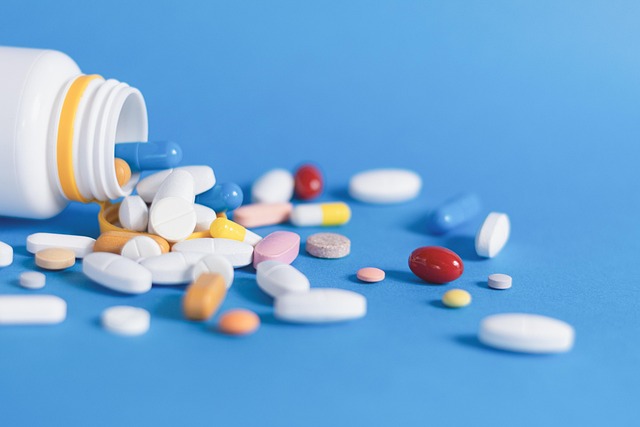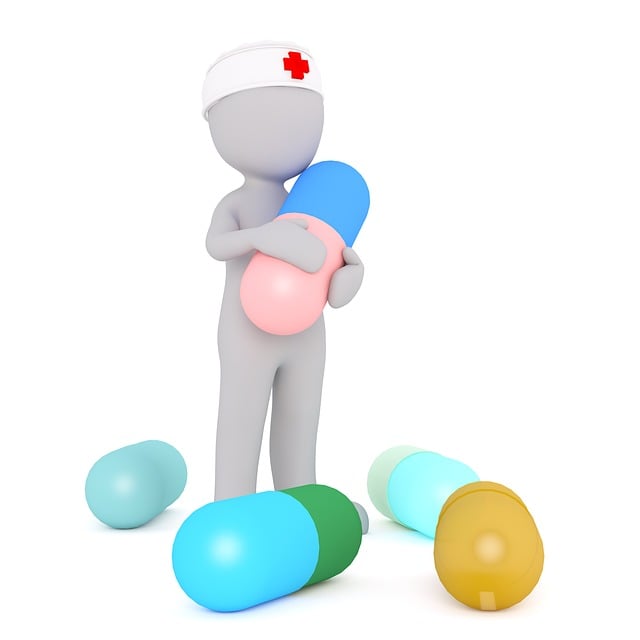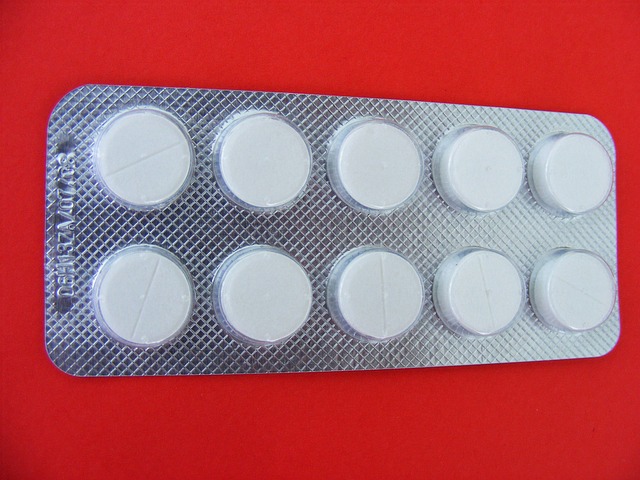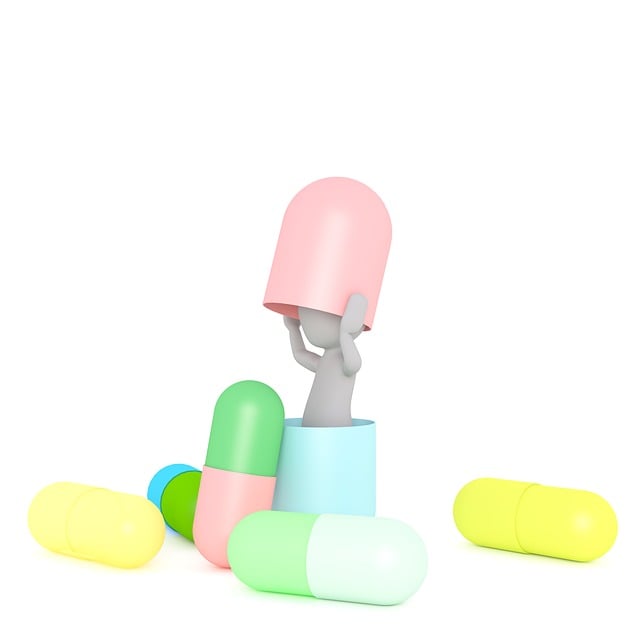GLP-1 drugs (glucagon-like peptide-1 receptor agonists) regulate blood sugar, stimulate insulin release, and slow gastric emptying, aiding in diabetes management. While effective, they cause temporary side effects like nausea, vomiting, and diarrhea, which can be managed through dietary adjustments and healthcare guidance. Long-term monitoring by healthcare providers is crucial for optimal GLP-1 therapy outcomes. Patient selection, individualized treatment plans, and future research on delivery methods and combination therapies further enhance their benefits in diabetes and weight loss treatments.
GLP-1 drugs, a groundbreaking class of medications for type 2 diabetes management, have shown remarkable efficacy. However, like any treatment, they come with potential side effects. This article delves into the intricacies of GLP-1 therapy, covering its mechanism of action, common adverse reactions, and effective management strategies. From long-term effects to patient selection, we explore ways to optimize treatment while minimizing side effects, ensuring better outcomes for those relying on GLP-1 drugs.
Understanding GLP-1 Drugs and Their Mechanism of Action

GLP-1 drugs, or glucagon-like peptide-1 receptor agonists, are a class of medications designed to mimic the effects of the natural hormone GLP-1. This hormone plays a crucial role in regulating blood sugar levels by stimulating insulin release and suppressing glucagon secretion. By activating GLP-1 receptors, these drugs enhance insulin’s action, improving glycemic control. The mechanism of action involves not only lowering blood glucose but also slowing gastric emptying, leading to increased feelings of fullness and reduced appetite. This multi-faceted approach makes GLP-1 drugs a promising treatment for type 2 diabetes.
The understanding of GLP-1’s role in metabolism has paved the way for the development of these therapeutic agents. These drugs are typically administered via injection or, in some cases, by mouth in the form of tablets. They have proven effective in improving glycemic control, with many clinical trials demonstrating their benefits over traditional insulin therapies. However, as with any medication, GLP-1 drugs are not without side effects, which include nausea, vomiting, and diarrhea—often considered minor and temporary during the adjustment period.
Common Side Effects Associated with GLP-1 Therapy

GLP-1 therapy, while effective for managing diabetes and weight loss, is not without its side effects. Common issues include nausea, vomiting, diarrhea, abdominal pain, and constipation—often referred to as gastrointestinal (GI) symptoms. These GI side effects are usually mild and temporary but can be bothersome for some patients. Additionally, GLP-1 drugs may cause respiratory infections like pneumonia or sinusitis, as well as skin reactions such as itching or injection site rashes.
Fortunately, many of these side effects can be managed or mitigated with simple strategies. For GI symptoms, eating smaller meals and taking medication with food can help. Patients should also stay hydrated and maintain a balanced diet to support overall wellness. Close monitoring by healthcare providers is crucial to identify and address any concerning side effects promptly, ensuring patients receive the best care possible throughout their GLP-1 therapy journey.
Management Strategies for Adverse Reactions

Management strategies for adverse reactions in GLP-1 therapy are crucial, as these drugs offer significant benefits for diabetes and obesity management. Common side effects include nausea, vomiting, diarrhea, and abdominal pain, which can be managed through dietary adjustments, such as increasing fiber intake and staying hydrated. Patients may also benefit from taking GLP-1 drugs with food or adjusting the dosage.
Additionally, healthcare providers can offer supportive care like antiemetic medications to alleviate nausea and vomiting. Regular monitoring of adverse reactions is essential, allowing for prompt intervention if symptoms worsen. Patient education plays a vital role in empowering individuals to recognize and report any concerning effects, enabling timely management and adjustment of GLP-1 therapy as needed.
Long-term Effects and Monitoring Considerations

The long-term effects of GLP-1 therapy are an important aspect to consider, as these drugs have shown promising results in various clinical trials lasting several years. However, ongoing monitoring is essential to assess and manage potential side effects that may arise over time. Regular check-ins with healthcare professionals are crucial for patients on GLP-1 drug treatment to ensure optimal outcomes and address any concerns promptly.
Monitoring involves regular blood tests to evaluate kidney function, liver health, and levels of the drugs themselves. Additionally, physicians might assess cardiovascular health, as some GLP-1 drugs have been associated with an increased risk of pancreatitis or thyroid cancer. Patient reporting of symptoms is also vital, enabling healthcare providers to identify and manage adverse reactions effectively, thus enhancing the overall safety and efficacy of this therapeutic approach.
Patient Selection and Individualized Treatment Approaches

Patient selection is a critical aspect of GLP-1 therapy, as not all individuals will benefit equally from these medications. Certain factors should be considered when deciding if a patient is a suitable candidate for GLP-1 drugs, such as their medical history, current lifestyle, and previous treatment responses. For example, patients with type 2 diabetes who have not achieved target blood sugar levels despite lifestyle modifications and other oral medications may benefit from GLP-1 therapy.
Individualized treatment approaches are essential to optimize outcomes. Healthcare providers should consider the patient’s preferences, side effect tolerance, and potential for adherence when prescribing GLP-1 drugs. Starting doses and titration schedules can be adjusted based on individual responses, ensuring that patients receive the most effective and well-tolerated treatment available.
Future Perspectives: Minimizing Side Effects in GLP-1 Drug Therapy

As research on GLP-1 drugs continues to advance, future perspectives in minimizing side effects are promising. One key area of focus is improving drug delivery methods and formulations to enhance patient comfort and adherence. For instance, developing long-acting, once-weekly or even once-monthly injection options could reduce the burden of frequent injections, thereby increasing treatment compliance. Additionally, novel drug delivery systems such as oral tablets or transdermal patches are being explored, offering alternative routes of administration that may reduce local injection site reactions.
Another important aspect is refining our understanding of individual patient variability in GLP-1 receptor response and side effect profiles. Personalized medicine approaches could tailor treatment plans to specific patients’ needs, optimizing glucose control while minimizing adverse effects. Moreover, ongoing clinical trials are investigating the potential of combination therapies with other metabolic agents to achieve better glycemic control with reduced side effects compared to monotherapy. These advancements hold great promise for improving patient outcomes and quality of life in the management of diabetes through GLP-1 drug therapy.
